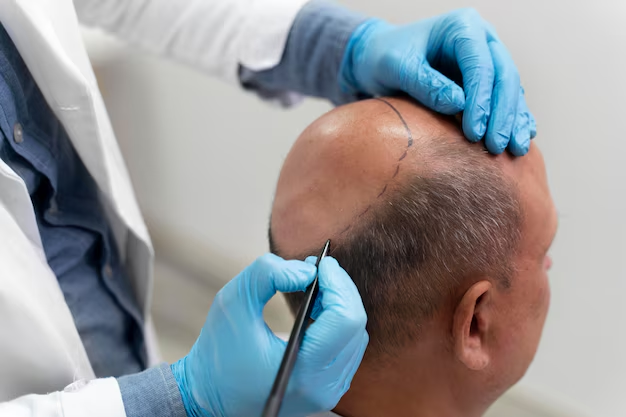
Hair loss can be a challenging experience, but modern hair transplant techniques offer a permanent and natural-looking solution. This blog provides an in-depth understanding of hair transplants, their benefits, and the process involved to help you make an informed decision.
What is a Hair Transplant?
A hair transplant in Islamabad is a surgical procedure where hair follicles from a donor site (usually the back of the head) are relocated to areas experiencing thinning or baldness. This advanced procedure is ideal for individuals seeking long-term solutions for hair loss.
The two main methods used are:
- Follicular Unit Transplantation (FUT): A strip of hair-bearing skin is removed, divided into grafts, and transplanted into the recipient site.
- Follicular Unit Extraction (FUE): Individual hair follicles are extracted and implanted, offering minimal scarring and faster recovery.
Benefits of Hair Transplants:
1. Natural-Looking Results:
Transplanted hair grows naturally, blending seamlessly with existing hair for a flawless appearance.
2. Permanent Solution:
Unlike temporary fixes, transplanted hair remains permanent as it is resistant to hair loss factors like genetics.
3. Improved Confidence:
A fuller head of hair can boost your self-esteem, making you feel more confident in your daily life.
4. Cost-Effective in the Long Run:
Though initially expensive, a hair transplant eliminates recurring costs associated with other hair loss treatments.
5. Minimal Maintenance:
Once healed, the transplanted hair requires the same care as your natural hair—no special treatments needed.
The Hair Transplant Process:
Step 1: Initial Consultation:
The process begins with a consultation where a specialist assesses your hair loss, reviews your medical history, and recommends the best treatment.
Step 2: Preparation:
The donor and recipient areas are prepared, and local anesthesia is applied to ensure a pain-free experience.
Step 3: Transplantation:
Hair follicles are carefully extracted and implanted into the target area to create a natural hairline and density.
Step 4: Recovery:
Patients may experience minor swelling or scabbing, but these symptoms subside within a few days. Following aftercare instructions ensures optimal healing.
Step 5: Results:
New hair growth begins within 3-6 months, with full results visible after 12 months, giving you a fuller and natural-looking head of hair.
Who is a Good Candidate?
Ideal candidates for a hair transplant:
- Have stable hair loss patterns.
- Possess sufficient donor hair.
- Are in good general health.
- Have realistic expectations about the outcome.
Choosing the Right Clinic:
The success of your hair transplant largely depends on the expertise of the clinic and surgeon. Look for:
- Experience and Certification: A skilled surgeon ensures precision and quality.
- Advanced Techniques: Clinics offering FUE or FUT with modern tools.
- Positive Patient Reviews: Testimonials and case studies reflect the clinic’s success rate.
Aftercare and Recovery:
Post-transplant care is vital for achieving desired results. Common guidelines include:
- Avoid strenuous activities for a few days.
- Refrain from exposing your scalp to direct sunlight.
- Use prescribed shampoos and medications to aid healing.
Conclusion:
A hair transplant is more than just a procedure—it’s a chance to reclaim your confidence and transform your appearance. With advanced techniques and expert care, you can enjoy permanent, natural-looking results that blend seamlessly with your natural hair.
If you’re ready to explore the benefits of hair transplants, consult with a trusted specialist today and take the first step toward a fuller, healthier head of hair.
For more information visit Dynamic Clinic PK.